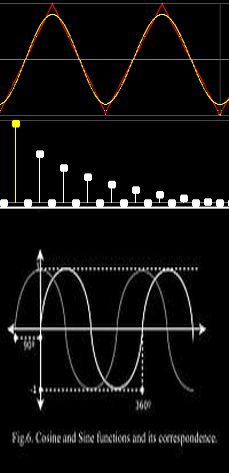Follow along with the video below to see how to install our site as a web app on your home screen.
Note: This feature may not be available in some browsers.
CORDIC sine generation isn't necessarily low bandwitdh, a sine/cosine wave can be generated incrementally by a complex rotation (two multiply and two add operations). It's a bit tricky to achieve steady state (a constant wave amplitude) with fixed point arithmetics. https://www.edaboard.com/threads/39599/CORDIC can also be used for low-area, high-latency/low-bandwidth applications.
Sure but at what cost and performance specs?
THD =-30dB? or?
What does ROM cost? for ref. and THD?
For bonus points, what is obviously wrong with these waveforms ( taken from a complex Sin/Cos FPGA paper I wouldn't recommend.)
View attachment 121586
